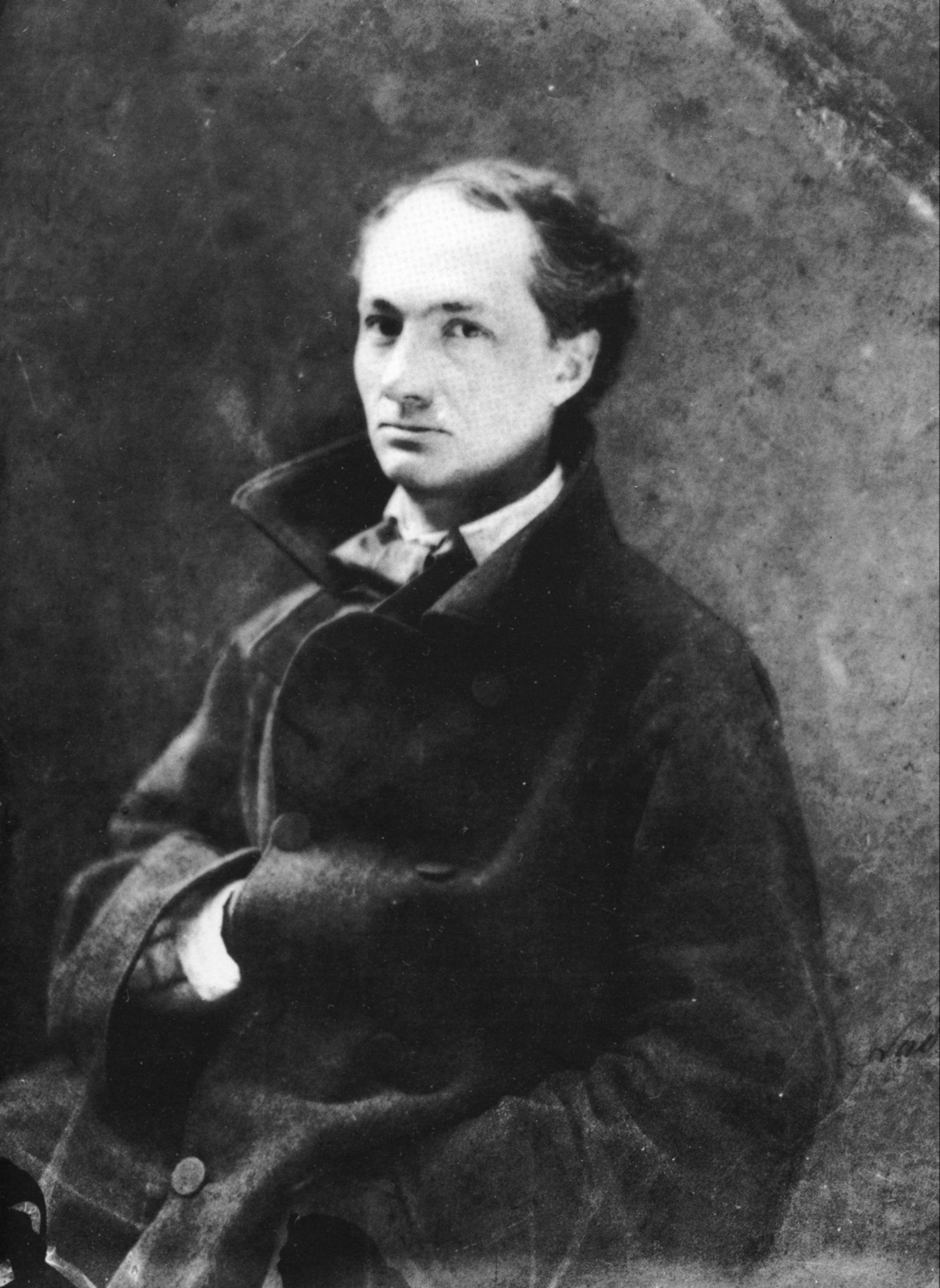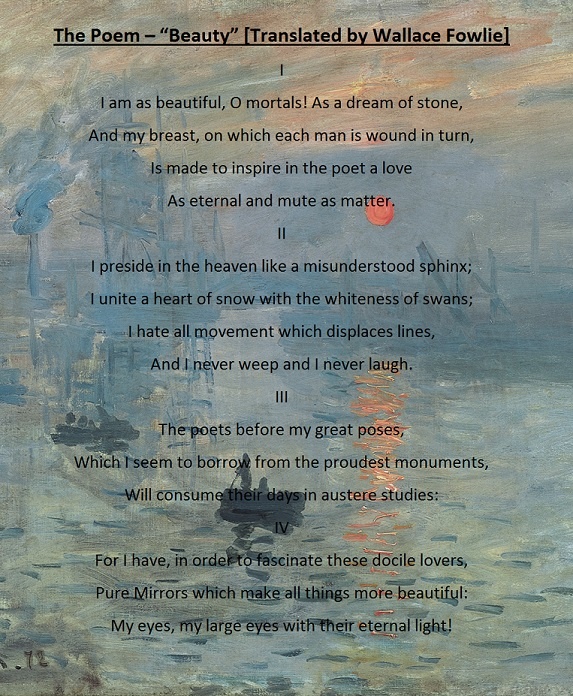Charles Baudelaire, the French poet, was always fascinated with the themes of death, rebellion, sex and the like. In his book The Flowers of Evil, published in 1857, there are many such references and the society was taken aback by the word play of Baudelaire. His poems like The Albatross, Beauty, A Carrion, Spleen carry some horrendous yet inescapable lines that would take the reader to a new realm of darkness and enlightenment at the same time.

The poem Beauty presents a painful exploration into the soul of a woman who seeks the reality of beauty. The fourteen lined, four stanza [4-4-3-3] poem gives out an utter truth about human behaviour. Beauty Analysis showers light into the various emotional factors in life that we forget while looking into something.
Beauty Analysis – Stanza 1
Baudelaire speaks of the worldly beauty that attracts everyone in the first stanza, especially the beauty of a woman. In The poem seems to reflect the heart of a woman who has seen great things in life and suffered great things as well. She mocks the human beings [referred as mortals] for believing herself as beautiful. She compares her beauty to a stone’s dream meaning that their view is meaningless and inappropriate.
However, she acknowledges the fact that she has inspired some good by encouraging poets. The poets love Beauty and love, according to her is eternal and mute. Here, Baudelaire uses two contrasting comparisons to describe love. He attributes eternity to love as it is evident that with love such feeling tends to exist. He also adds the mute element to show that love is not always sweet and sometimes one has to swallow the bitter pill. It also reflects on the eternal element as being eternal without a purpose can be quite devastative to the soul.
Beauty Analysis – Stanza 2
In the second stanza, Baudelaire comes away from the description of Beauty as a woman and personifies her. Beauty feels that she is not the one to be placed amongst the Heavens. This might be a reference to Baudelaire’s philosophy that Beauty cannot be attributed to a single place. Meaning, one can find it anywhere as we see that the painters can find inspiration from the Hell as well.
In the next three lines, the elegant nature, harmonious perspective and pride of Beauty are enumerated. Beauty is so elegant that she can unite a gentle heart [heart of snow] with the beauty of swans [Admiration of Nature]. The harmonious nature of Beauty is depicted when she expresses her hate towards displaced movements. There is an element of self-awareness as it is obvious that external beauty wax and wane. Baudelaire might have suggested, to be aware of the trivial external charm and seek for the internal pleasantness that stays forever. Her proud nature is revealed when she declares that there is nothing in the world that can make her laugh or weep, for everything is a spectacle to her. Further, the poet again reminds the reader that Beauty cannot feel anything as it is a non-existing entity.

Beauty Analysis – Stanza 3
Charles Baudelaire again transforms Beauty into a woman – a woman who is happy to see the poets work on her stature. She acknowledges the fact that her poses are taken from the monuments of the old, indicating that human beings have set a standard for beauty and it is still followed without swaying that path. Irrespective of that, she feels that the poses will make sure the poet spend his days wondering about the nature of Beauty.
Baudelaire ridicules other poets who only seek Beauty in the external pleasures of life. Many Romantics, Elizabethan poets, etc. have portrayed woman, nature, love, God, etc. as the supreme representatives of Beauty. It is contrary to the idea of a poet according to Baudelaire, as he finds admiration of Beauty in many things. The Beauty analysis he makes is completely different from the others; hence, the difference in opinion through the lines.
Beauty Analysis – Stanza 4
The final stanza is like a revelation where Baudelaire shows the true source of Beauty and how to look at the reality. Beauty calls the observers [poets, lovers and the like] as submissive and the main reason is their “Eyes”. Eyes are the source for human beings to look at things and analyze whether or not a thing is beautiful.
The worthiness of an object or a person depends on the eyes that look at them. The beholder is everything and the object or person is static waiting to be judged. Baudelaire uses the word “Mirrors” to portray a powerful message. Eyes show everything based on the behaviour of the individual. If a person is upset than nothing can please him and if a person is happy he can see butterflies in caterpillars. Therefore, people should not worry or judge Beauty and look into the self to find Beauty. For the true Beauty lies within the heart and if one can find it everything in the world seems beautiful.
Analysis of Beauty - Download in PDF